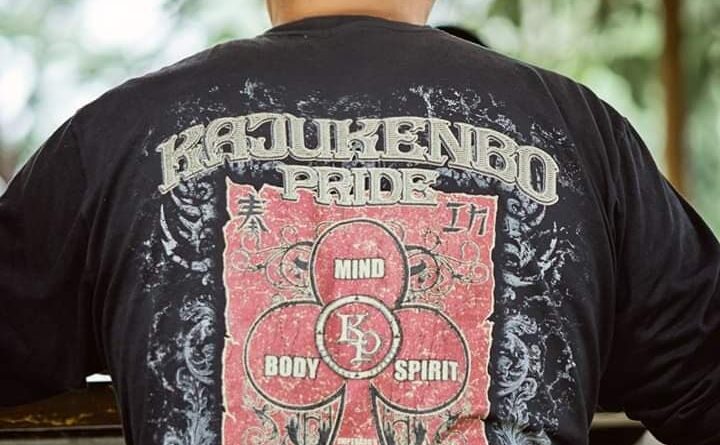Sonny Sison on Kajukenbo, FMA, and finding his identity in the Martial Arts

N.B.
I interviewed Sonny way back December 2018 (according to my audio recorder) so this article is pretty much 2 years old. My apologies for the delay. Nonetheless, the topics and principles we talked about then remain just as relevant today. Enjoy.
You may have heard of Sonny Sison from his involvement in movies as a director, choreographer, and even as an actor. And if you have seen any of his impressive cinematic body of work, it shouldn’t surprise you to know that he has an extensive background in Martial Arts. He was born here in the Philippines but moved to the United States (Hawaii to be exact) at a very young age. It was in Hawaii where his journey in the Martial Arts began, studying Shotokan as a small boy and then Shorin Ryu when he briefly came back to the Philippines. Sonny’s first taste of Kajukenbo was in Hawaii, but it was only when he moved to LA where this Hybrid system would really pique his interest and, ironically, lead him back home to learn more about the Filipino Martial Arts.
Sonny has had a front seat to both the American and Filipino way of approaching the Martial Arts. A lifelong student, he learned early on how to reconcile the more adaptive and “open” mindset of Kajukenbo to the more traditional ways of many local Martial Arts systems—a skill that has helped him not only in his journey as a warrior, but also in his professional, and personal journey as a person.
Olisi: Could you give us a brief overview of Kajukenbo and how you got started in it?
Sonny: Kajukenbo as a system was formed in the late 40s by five practitioners from different styles/systems. The term/name comes from KArate, JUjutsu/JUdo, KENpo, and BOxing. The initial boxing content was from Chinese Boxing or Kung Fu and only later included Western Boxing. The Karate portion was, at that time, attributed to Korean Karate which was mainly Tang Soo Do.
Within the Kajukenbo system there are four main styles— (1) Kenpo from the background of the last living founder Sijo Adriano Emperado, (2) the Tum Pai system which mainly consisted of the southern Chinese martial arts system like Hung Gar and Choy Li Fut, (3) Chuan Fa (hand way), (4) and Wun Hop Kuen Do (combination fist style) through Al Dacascos.
Olisi: What initially attracted you to Kajukenbo?
Sonny: What I appreciate about the style is that it is open. Rooted in tradition but continues to evolve. It does have a standard curriculum, but when you get to the third degree, you are encouraged to study another system completely outside of Kajukenbo. Whatever you learn, you bring back with you. You study the techniques and principles that can blend to what you already know. Kajukenbo believes that there is no one system that has the answer to everything. Every system has something good to offer. Some are more combat-oriented, some are more expressive in terms of cultural arts—and we are taught to appreciate both. They all have their place. Through my exposure to Kajukenbo, I can look at something and decide whether I like it or I don’t like it. I never say it’s not good, it’s just that it’s not for me. Ultimately, I think it really depends on who your teachers are—they mold you and guide you to find your personal expression.

Olisi: How is the learning structured in Kajukenbo given that it is made up of several systems?
Sonny: I am primarily a Wun Hop Kuen Do practitioner but to me, that is only a name. I am not stuck to it. Most people will still refer to Kajukenbo as the system. According to the structure of how people should properly use the terminology, the system is the parent, then to style, from style to method, from method to expression. Method is the way your teacher instructs you, expression is how you do it. In that sense, you learn how to build your own identity and not end up like a robot. A good teacher will recognize a student’s strengths and weaknesses and will show him how to improve or compensate for them.
Olisi: I think one of the biggest criticisms said about a hybrid system is that the transfer of knowledge from teacher to student has the possibility of being diluted precisely because the method of instruction is personalized (as opposed to being standardized). What can you say about this?
Sonny: I think that if we are talking about a pure style, then to some degree—would it be diluted? Yes. Would it be ineffective? No. Because in the end you are still using the essence of where that information comes from—it might just be in a different expression.
Olisi: How did Kajukenbo strengthen your interest in FMA?
Sonny: I think the mindset I was trained at really fit my Filipino identity—to be able to take so many influences and make that ‘halo-halo’ work. That I think is the strength of the Filipino. My learning FMA was something encouraged by one of my teachers, who was African-American. He said ‘don’t turn your back on Filipino culture.’ My connection to my being Filipino starts with Filipino Martial Arts. I’m Filipino by blood, American by culture through my upbringing, and I have learned to reconnect to my heritage through the Filipino Martial Arts.

Olisi: What aspect of FMA do you like the most/ do you find most unique?
Sonny: I believe that what differentiates martial arts systems from each other is really Philosophy. A lot of the Asian martial arts is based on religious/ philosophical thought— whereas Filipino martial arts is a matter of survival. It doesn’t depend on who you pray to. It was used to protect the community or for self-preservation. This is another aspect that, for me, links it to Kajukenbo. The base of Kajukenbo, the reason for its development, was for self-preservation. Hawaii, particularly Honolulu, was a lawless kind of territory back then, where anything could happen. According to Kajukenbo history, there were a lot of military guys who would bully the locals. The Kajukenbo founders wanted to create a system that could deal with these guys causing trouble.

Olisi: What was the first FMA technique/ lesson you learned?
Sonny: FMA (using sticks) was part of the Kajukenbo curriculum. The first technique I learned was the Sinawali—the most identifiable movement in FMA (laughing). But it wasn’t until I met my teacher in Serrada Largo Mano de Cuerdas (SLD), created by Maestro Dentoy Revillar, that I was completely in awe of FMA. Even to this day, after having met so many great masters of FMA, I still consider my SLD teacher as one of the best.
Olisi: As a Fil-Am who has experienced learning FMA in the US and learning it here, what would you say are the differences/similarities in how it is taught?
Sonny: From the teachers I’ve had the opportunity to study with/under, there is no major difference. They’re all very quick to assess what the student is capable of understanding/ learning. My experience with teachers from the Philippines, though, is that because they know I have some background already—they want to start me off in the advanced techniques which I always have to respectfully refuse. I explain that I would rather they teach me as if I know nothing. However, because of my background as a dancer and choreographer, I can pick things up pretty fast. I try not to get ahead of myself but many of the teachers are very generous with their knowledge and want to give me as much as they can. Maybe because they also know that we have very limited time together. I am fortunate to have met extremely intelligent teachers who are both great at teaching and executing the techniques. That’s why when I look at a teacher— I look at their skill but I also look at their character. I would rather learn from someone who is 95% character and 5% ability than 5% character and 95% ability.

Olisi: What do you think is the next step for Filipino Martial Arts?
Sonny: I would like to see Filipino Martial Arts get recognized as a legitimate martial art worldwide. If you say Karate, people know what it is, when you say Kung Fu, people know what it is. If you look at the people who study FMA, it’s still a niche market. But at the same time you look at the elite fighting forces around the world training in Filipino Martial Arts— that’s validation in itself. I think more people should get exposed to FMA. And for that to happen, FMA as a whole needs to have a mission statement—much like what Japanese Karate did or Tae Kwon Do. I know there will always be internal politics and that is unavoidable, even in other arts it exists, but there should be an awareness to propagate the art as a whole. Secondly, as far as instruction is concerned, I think it is up to the next generation of Filipino instructors to build upon what the old Grandmasters have started. Americans are naturally very analytical whereas Filipinos are more about the feeling when they teach the art. I think it is on the next generation to bridge both aspects and to make sure that the Filipino culture remains intact in the art. As someone who has trained FMA here and abroad, I can say that there is definitely something about training in the Motherland that brings a different element to the art.
Sonny, through his expertise as a fight choreographer, has not only been trying his best to elevate the level of action in the local movie industry but to also showcase true FMA in film so that more people get to see its unique flavor. When we did the interview, ‘BuyBust’, his movie with Erik Matti just finished and his next project ‘Maria’ with Director Pedring Lopez, was just wrapping up. Today, the two films have already been out for some time and have made their indelible marks in the industry—with FMA front and center. If you haven’t seen them yet, I strongly suggest you do immediately.

